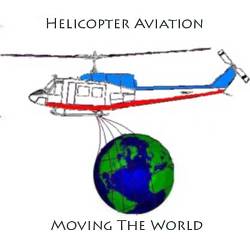



There can be no argument that in Aviation today that the number one most important topic is safety. You hear people throwing around all types of numbers about percentages of this and ratios of that but without a base to guide by, these numbers are of no real value and can be used to express any point of view merely by the context in which they are presented.
In this article I am going to throw out some numbers, you know percentages of this and ratios of that but I hope to do it in such a way as to give a more understandable base to go by. I will only be addressing the Rotor Wing side of Aviation and so as to not get overly long winded I will be addressing mainly single engine, turbine rotorcraft.
Everyone will agree that multi engine ships have a substantially lower accident rate than singles. And this is almost always attributed to having the second engine to ensure that there is always power to the rotor system. But the fact that less than 2% of rotor craft accidents are attributed to loss of engine power would tend to make the theory not pan out. In reality most individuals in the industry know that the differences in the accident rates between multi and single, stems primarily from pilot experience. Let’s face it, an operator will almost always put his most experienced pilots in his most expensive ship ie: his multi engine platforms.
I will be addressing the “big 3” in the light turbine helicopter market; AEC TC# H9EU, Bell TC# H2SW, and MD TC# H3WE.
The Data that I used to compile the following statistic came directly from the FAA accident data base http://www.ntsb.gov/ntsb/query.asp and anyone with a calculator and the patience can feel free to double check my figures. The Data is derived from accident reports over the previous 10 years.
It does not include the total number for each manufacturer as this would skew the mathematics simply because of the numbers of ships delivered over the years since Bell has delivered almost double the number of ships as the other two players combined. And MD/Hughes and Bell had a 20 plus year head start on AEC
Let’s begin with the Bell TC# H2SW this encompasses the entire 206 series from the first jet ranger up to and including the 407.
Of total accidents:
9% result in fatalities.
4% result in post crash fire.
24% of fatalities involve post crash fire.
Next let’s look at the MD TC# H3SW This includes all models of the 369 series , 500, & 600 aircraft including those manufactured by the original company Hughes helicopters, McDonald Douglas, & Boeing aircraft.
Of total accidents:
9% result in fatalities.
1% results in post crash fire.
18% of fatalities involve post crash fire.
And last but certainly not least is the AEC TC# H9EU. This is the AS350 line including the newer EC130B4, Excluding the EC120 which is certified under its own TC#.
Of total accidents:
39% result in fatalities.
11% result in post crash fire.
25% of fatalities involve post crash fire.
As I have already mentioned above less than 2% of Rotorcraft accidents’ are caused by outright engine failure. Would it surprise you if I told you that less than 2% are a result of unforeseen failure of the aircraft itself either structural or a mechanical part?
Let’s see 2+2=4 So that leaves 96% of accidents have another cause, human beings.
People will argue this point but if you go to the root of the matter the human factor is where the bulk of the blame lies. If a ship goes down in bad weather it was the pilot’s decision to place his ship and crew in that circumstance. If a ship goes down because the mechanic made the call that an Alert Service Bulletin is a waste of his time because it was not a regulatory mandate. Or a part fails because of a defect that was identified but deemed to be insignificant. Those would be foreseen failures and they belong exclusively and completely to the aviation technician who made the call. The list could go on for hours but in the end the missing 96% stems from human judgment.
There is an old Saying:
“Aviation in itself is not inherently dangerous. But to an even greater degree than the sea, it is terribly unforgiving of carelessness, incapacity, or neglect”…. It was written a long time ago by someone that no one remembers but still applies today maybe more than ever!